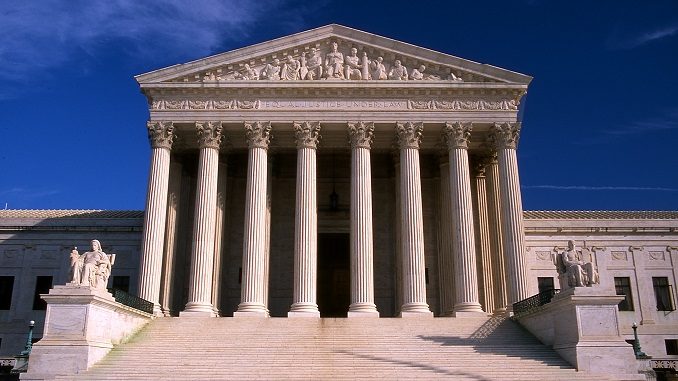
Abortion rights are at risk at the Supreme Court, but the short-term threat may not come from extreme measures like the one passed by Alabama lawmakers, the New York Times writes.
The court led by Chief Justice John G. Roberts Jr. is more likely to chip away at the constitutional right to abortion established in 1973 in Roe v. Wade than to overturn it outright – and it will have plenty of opportunities to do so.
As soon as Monday, the court could announce whether it will hear challenges to three provisions of Indiana abortion laws on issues like the disposal of fetal remains and an 18-hour waiting period after state-mandated ultrasound examinations. The court will in the coming months almost certainly agree to hear a challenge to a Louisiana law that could reduce the number of abortion clinics in the state to one, the Times added.
The Alabama bill, signed into law on Wednesday, is a different kind of measure, one that squarely conflicts with Roe. It would ban almost all abortions in the state, without exceptions for rape and incest, and subject abortion providers to harsh criminal penalties. Because the Roberts court tends toward incrementalism, it is not likely to want to take on a direct confrontation with that precedent.
Lower courts will almost certainly strike down the Alabama statute and other direct bans on abortion, like the ones that bar the procedure after doctors can detect what the measures call a “fetal heartbeat,” which happens at around six weeks of pregnancy. The lower courts will have little choice, as controlling Supreme Court precedents prohibit outright bans on abortion until the fetus is viable outside the womb, usually at about 24 weeks, the Times explains.
Since the Supreme Court controls its own docket, it can simply deny review after lower courts strike down laws squarely at odds with Roe.
To be sure, recent changes on the court have given opponents of abortion rights new hope for a wholesale reconsideration of Roe. Justice Anthony M. Kennedy, who retired last year, had been a cautious supporter of abortion rights and was an author of the key opinion in 1992 in Planned Parenthood v. Casey, which both reaffirmed and modified the core of Roe, announcing that states may not impose “undue burdens” on abortion rights.
Justice Kennedy has been replaced by Justice Brett M. Kavanaugh, whose limited record as an appeals court judge suggests that he will be more skeptical about the right to abortion.
There are three members of the court – Justices Clarence Thomas, Samuel A. Alito Jr. and Neil M. Gorsuch – who seem less patient. In February, Justice Thomas wrote that Roe was among the court’s “most notoriously incorrect decisions.” He gave one other example of such a ruling: Dred Scott v. Sandford, the 1857 decision that said black slaves were property and not citizens.
It takes only four votes to add a case to the court’s docket, meaning that either Chief Justice Roberts or Justice Kavanaugh could force the court to confront the ultimate fate of a constitutional right to abortion when a case concerning the Alabama law or a similar one reaches the court, the Times noted.




Be the first to comment